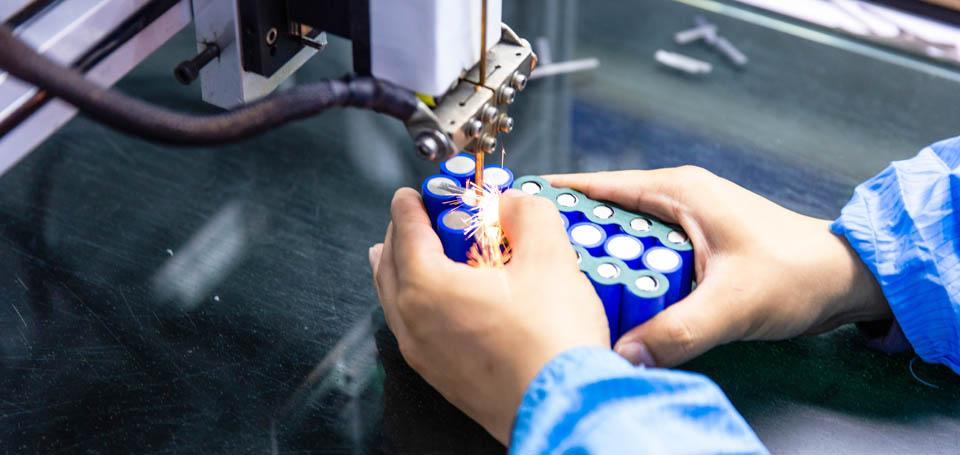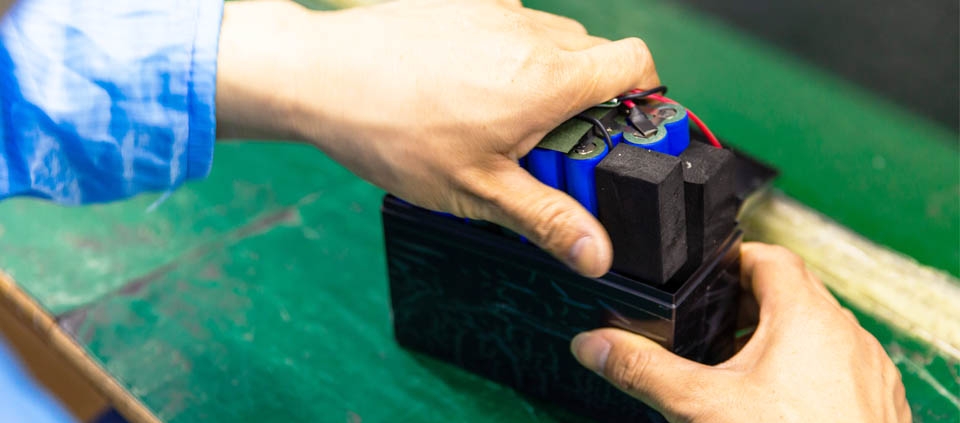Analysis of Cell Consistency in Lithium Battery Assembly
Inconsistencies in custom lithium battery pack parameters mainly refer to inconsistencies in capacity, internal resistance, and open circuit voltage. Inconsistencies in cell performance are formed during the production process and deepen during use. Today, the editor will take you to understand the issue of consistency of lithium battery packs.
1.Definition of co-nsistency
The consistency of custom lithium battery pack refers to the convergence of a group of important characteristic parameters of lithium batteries. It is a relative concept. There is no most consistent, only more consistent. For multiple strings of cells in the same battery pack, it is best for each parameter to be within a smaller range for better consistency.
Adding the time dimension, consistency refers to the consistency of all characteristic parameters of all cells in the battery pack throughout their life cycle, taking into account inconsistencies in capacity attenuation, internal resistance growth, and aging rates. The life of the entire battery pack is our ultimate focus on consistency.
The purpose of pursuing consistency is not only to maximize the capabilities of the custom lithium battery pack (including maximum power, maximum current, and maximum available capacity) in the current state, but also to maintain such capabilities for as long as possible.
2.The concept of inconsistency
Inconsistencies in custom lithium battery pack parameters mainly refer to inconsistencies in capacity, internal resistance, and open circuit voltage. The voltage is the initial voltage of the battery when assembled. The internal resistance is the AC internal resistance when fully charged, and the capacity is the discharge capacity of the battery cell after it is fully charged.
Accumulation occurs with the continuous charge and discharge cycles of the battery during use, resulting in greater differences in the status (SOC, voltage, etc.) of each individual battery;
The usage environment in the lithium battery pack also affects every single cell. This leads to the inconsistency of single cells gradually amplifying during use, which in some cases accelerates the degradation of the performance of some single cells, and ultimately causes premature failure of the lithium battery pack.
Supplement: SOC is used to describe the remaining power of the battery and is one of the important parameters during battery use. SOC estimation is the basis for judging whether the battery is overcharged or discharged.
The open circuit voltage of lithium batteries has a clear and monotonic correspondence with the battery’s charge. As long as the accurate open circuit voltage is obtained, the battery’s charge can be calculated.

3.Causes of inconsistency
The inconsistency of the custom lithium battery pack is a continuous accumulation process. The longer the time, the greater the difference between the single cells; and the custom lithium battery pack will also be affected by the use environment, and the single cells will be inconsistent in the future use process. The characteristics will be gradually amplified, causing the performance of some individual batteries to decline at an accelerated rate, and ultimately causing the battery to become useless.
The inconsistency of lithium battery packs is mainly affected by time. The reasons mainly include two aspects:
- First of all, there are process problems and uneven materials in the manufacturing process, which make the materials and materials of lithium batteries slightly different. After the lithium battery pack is put into use, the electrolyte density of each battery in the battery pack will have a difference. and temperature and ventilation conditions, self-discharge degree charging and discharging processes, etc.as well, there may be differences in capacity and internal resistance of batteries of the same model shipped from the same batch.
- When used in a vehicle, the electrolyte density, temperature and ventilation conditions, self-discharge degree and charging and discharging process of each battery in the lithium battery pack are affected by differences.
4. Scope of consistency evaluation
Personally, I understand that the consistency of all cells used as power, regardless of series or parallel relationship. Give a simple example.
Parallel connection situation
The battery cell with low discharge capacity (code B) is connected in parallel with other normal battery cells to form a parallel module D. For example, this module has 10 batteries connected in parallel. Each parallel module must provide the same current, such as 100A, to discharge the system. For other normal parallel modules, each battery discharges 10A; B can only discharge a maximum current of 1A, and the other 9 batteries each need to discharge 11A. Generally speaking, these cells will age faster than other parallel modules due to long-term overloading. One day, this parallel module’s overall maximum discharge capacity cannot reach the designed maximum capacity. This parallel battery pack has become a bottleneck in the discharge capacity of the entire battery pack.
Series connection
According to the general situation, the series connection relationship is mainly between modules. Continuing the previous plot of the parallel connection situation, there is a battery pack D that is more aged than other battery packs in the entire battery pack. D has a small capacity and a large internal resistance. Reflected on the curve between SOC and open circuit voltage, the open circuit voltage corresponding to the same SOC has a higher voltage at D terminal. When the entire battery pack is charged, D reaches the charging cut-off voltage first, and the battery pack stops charging. The other modules haven’t eaten enough, and he is already about to burst his belly, because it is getting smaller with age.
Therefore, cell consistency is not a matter within a module that is welded together, but is a requirement for all power batteries.
What hazards and problems will occur if the lithium battery pack is inconsistent?
Poor consistency may lead to uneven real-time voltage distribution of each battery cell during charging and discharging, causing overvoltage charging or undervoltage discharging, causing safety issues.
details as follows:
① Capacity loss.
The cells form a custom lithium battery pack. The capacity conforms to the “barrel principle”. The capacity of the worst cell determines the capacity of the entire battery pack.
② Loss of life.
If a small-capacity battery is fully discharged every time and the output is too strong, it is likely to reach the end of its life first. When the life of the battery core ends, a group of battery cores welded together will also end their life.
③The internal resistance increases.
With different internal resistances, the same current flows, and the battery core with large internal resistance generates relatively more heat. If the battery temperature is too high, the degradation rate will be accelerated, and the internal resistance will further increase. Internal resistance and temperature rise form a pair of negative feedback, which accelerates the degradation of high internal resistance cells.
Lithium batteries use protective circuit systems during use to ensure safety. The intuitive performance of the consistency of lithium batteries during use is the difference in voltage consistency (voltage difference), and the detection of the protection system is based on voltage monitoring. When the voltage of one of the single cells reaches the protection condition, the battery circuit will be cut off, regardless of whether the other single cells are fully charged or discharged. After continuous charging and discharging, this difference will become larger and larger until the battery pack loses its use value. Safety issues can occur when combined with factors such as individual protection system failures or failures.
If you have any question, please feel free to contact us:
- Name: Dawn Zeng (Director)
- E-mail address: sales@himaxelectronics.com



